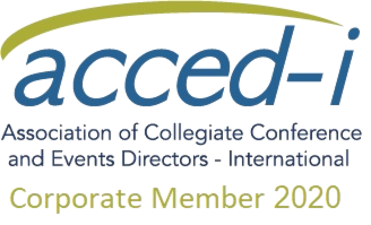
- By Tom Pick
- In Faculty,Professional Development,Training
- Posted November 15, 2022
One Effective Way for Colleges to Win the Battle for Students in the Coming Decade
With a smaller pool of college-bound students over the next decade, colleges and universities will have to use all the tools at their disposal to compete for them. Here’s one promising idea that may not be top of mind.
While the most elite institutions will likely continue to have more applicants than openings through the 2020s, most colleges and universities will face significant headwinds from a combination of declining birth rates and fewer high school seniors heading to college.
Schools have an array of familiar tools and tactics for attracting the nation’s best and brightest, from accreditations and recognition (e.g., “one of the top 20 business programs”) to degree offerings, on-campus amenities, and financial aid packages.
Prospective students will check out all of those elements online, but also look at and place importance on instructor ratings. (NOTE: For the sake of brevity, we’ll use the terms “instructor” and “faculty” to refer to professors and anyone else who teaches college courses.) Here’s how colleges and universities can compete more effectively in that arena.
Why Instructor Ratings Matter
Though not as important as location, cost, and graduation rate, instructor quality ratings are nonetheless among the top factors considered by students when choosing a college. Sites like Rate My Professors are used by both students and college administrators for decision-making, despite some concerns over bias and validity.
From the student perspective, a high-quality instructor is one who effectively teaches the course material, grades fairly, and makes the course interesting—even entertaining.
From the standpoint of the school, high-quality instructors produce better learning outcomes, get higher ratings from students, have better class attendance, and ultimately contribute to higher student retention and graduation rates for the school.
College and university administrators have strong incentives to both hire wisely and invest in ongoing professional development for their faculty members. Making instructor quality a high priority supports both student recruitment and retention efforts, ultimately leading to a larger, more successful alumni base for fundraising.
The Failure to Communicate
The key elements of instructor quality include subject matter expertise, classroom management capabilities, pedagogical skills, passion for their profession, and—very importantly—communication skills.
Yet despite the importance of faculty quality, far too many instructors in general, and professors in particular, aren’t very effective in the classroom. Too often, professors are subject matter experts (SMEs) but have had little if any training in how to teach students. Unlike K-12 teachers, college professors typically have limited training in pedagogical methods, compounded by poor interpersonal and communication skills.
This unfortunate state of affairs is blamed on a range of factors from apathy about student evaluations to low morale, high workloads, and the tenure system.
According to BEST featured keynote speaker Tom Leu, who’s worked as an instructor, academic dean, and trainer in higher education settings, “Though I’ve not yet found formal studies which support the claim that most college instructors are SMEs with little-to-no formal training in teaching or public speaking, I have formally observed this gap at all levels in every college or university I’ve worked with.
“I’ve conducted and sat in on hundreds of hours of classroom sessions since 2007, evaluating faculty live in the classroom. So, while I know many of the online articles describing these pedagogical and communication issues are informal, my reviews were, and are still today, formal. These issues are real, yet often not discussed. It’s common that faculty are not specifically trained in how to teach and communicate for impact.”
The Answer: Communication Training
Faculty development keynote presentations (such as our Seeing Things and My Generation keynotes) followed up with in-service sessions focused on strategic communications training can lead to:
- Improved student engagement;
- Increased class attendance;
- Higher student and instructor retention;
- More equitable and consistent grade distribution; and
- Better learning outcomes.
All of these are top priorities for college administrators and academic leaders everywhere. College administrators who are hiring will look for the teaching and communication skills in their new faculty that can support these outcomes. And they’ll pursue ongoing training for existing faculty to help develop communication and presentation skills that will improve student engagement.
Professional development workshops supported by monthly online follow-up sessions, as well as programs like our DiSC Profile Workshop, Emotional Intelligence Training, and Myers-Briggs Type Indicator (MBTI) Training improve faculty interpersonal and communication skills. The outcomes benefit instructors, students, and the institution.
What to Look for in Communication Training for Collegiate Instructors
In higher education, it’s important to work with a trainer who has education credentials, someone with appropriate degrees and experience to meet the needs and expectations of an academic audience. Look for someone with higher education classroom experience, an individual who’s taught students and trained teachers.
The ideal trainer or facilitator will combine experience, credentials, passion, and a track record of success evidenced by testimonials with the ability to deliver recurring training to your faculty. This isn’t a one-and-done exercise.
Your faculty training should address, at a minimum, four specific areas:
Technology: Most collegiate instructors learned to use online tools and smartphones as adults, while nearly all of today’s college students grew up with these things. The Internet has never not existed for them.
In terms of social media, faculty-age individuals are most likely to use Facebook, LinkedIn, and Pinterest, while the student-aged population is more focused on Instagram, Snapchat, and TikTok. Two-thirds of TikTok users are under age 25, and more than 82% are under 35. (Everyone uses YouTube.)
College and university instructors need to understand how these different technology experiences shape perspectives, and how to use that knowledge to communicate more effectively. In addition, this is a continually moving target, so administrators need to put mechanisms in place to help instructors stay current.
Generational differences: Two-thirds of collegiate faculty today are either members of Gen X or Boomers. Roughly a quarter are Millennials. Virtually all incoming students are in Gen Z. A skilled communicator must be able to work within and between all of those generational cohorts. No matter what age instructors are, they need the skills to communicate effectively to all age groups, but particularly to Gen Z.
Teaching and learning styles: Students differ in how they learn best: some are primarily visual, others auditory, and still others kinesthetic learners. Instructors, on the other hand, are mostly likely to teach in the style in which they learn best. Training is required to enable instructors to understand these different styles and incorporate a variety of approaches into their classroom and lab settings.
Student motivation: Ideally, courses should be designed around the concept of “What’s in it for me?” (WIIFM) from the student’s perspective. They should understand WHY the “boring” theory or concept being presented by the instructor is important to THEM, and how it will help them professionally as well as personally later in life. They should have a real, tangible sense of that, and they should get it from the instructor in an engaging way, using modern tools and technology.
That type of communication doesn’t come naturally to most people. But those skills can be taught.
How to Overcome Faculty Reticence
Ideally, your institution’s instructors will understand the benefits of pedagogical and communications training for everyone involved, and embrace it. They will want to develop these skills in order to make the classroom environment more enjoyable and engaging not only for students, but also themselves.
As noted in the opening section above, improving instructional skills is no longer an option for most colleges and universities. It’s essential as one component in competing for a shrinking pool of prospective students. According to Inside Higher Ed:
“Higher education will soon face shrinking cohorts of traditional-aged students, whose enrollment has long been key to making budgets balance. The sector may not be able to kick the can down the road and avoid fixing its creaky business model much longer.”
For instructors who may not be enthusiastic about communications training, the first reason to change that mindset is simply enlightened self-interest: a shrinking pool of students also means a shrinking pool of faculty openings. The more skills and credentials they have to prove they are engaging in the classroom, the more marketable they will be.
Five additional approaches for dealing with faculty reluctance to embrace communications training are:
Socratic questioning: Some instructors may balk at the need for training, contending that they don’t need it because of their past education and experience. One approach in this situation is to persuade through questioning, for example:
Do you agree that technology has changed dramatically over the past few years? Do you think that has changed how we communicate? We’ve seen other instructors significantly increase their attendance, engagement, and student ratings…are you curious about how they’ve achieved that?
The goal is to lead instructors into concluding for themselves that some training might be a worthy pursuit.
Institutional culture: People are much more likely to accept responsibilities that are part of the environment, part of “the way things are done” here, as opposed to unusual, disruptive demands. If ongoing, regular skills training is part of a school’s normal operations, and is presented enthusiastically as an opportunity—rather than mandated drudgery—instructors are more likely to embrace it.
Emphasize “fun”-damentals: One key outcome of communication and presentation skills training is that instructors learn how to make their classroom material more engaging, even entertaining. The communication skills training itself should be delivered based on those same principles. It’s enjoyable—even fun!—not just a boring lecture with endless text-based slides, etc..
Evaluation criteria: Instructors should be, and generally are, evaluated regularly on criteria including attendance percentages, attrition, retention, grade distribution, and student evaluations. Make the connection between training and improvement in these areas explicit.
Appeal from authority: As a last resort, make it a requirement. “This comes from the top, from the dean. This training is required to maintain our accreditation.” But combine this with more positive motivation (see all of the points above) as well.
Wrapping Up
Most of the nation’s colleges and universities will find themselves competing for a shrinking pool of new students over the coming decade. Smaller graduating high school classes, the high cost of higher ed, and changing societal attitudes toward the value of a degree will all play a role.
To compete, schools will have to use all of the tools at their disposal, from campus amenities and program offerings to financial aid packages and career services. Another key element is instructor quality, as prospective students place high importance on professor ratings.
Despite that importance, a significant share of collegiate faculty has little to no training in pedagogy or communication skills. The result is lower student engagement, poorer ratings, and ultimately less competitiveness for the institution.
Communication and presentation skills training can help in all of these areas. Delivered properly, it not only improves outcomes but is enjoyable for participants. And delivered regularly, it enables colleges and universities to improve across multiple dimensions over time, from retention and graduation rates to attendance and instructor quality reputation.







Recent Comments